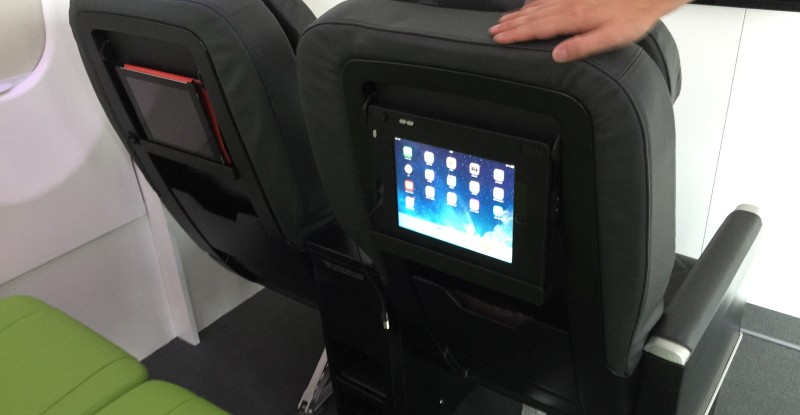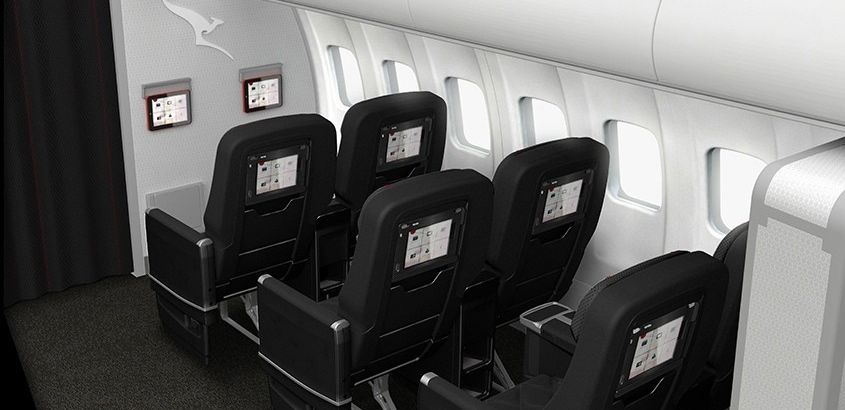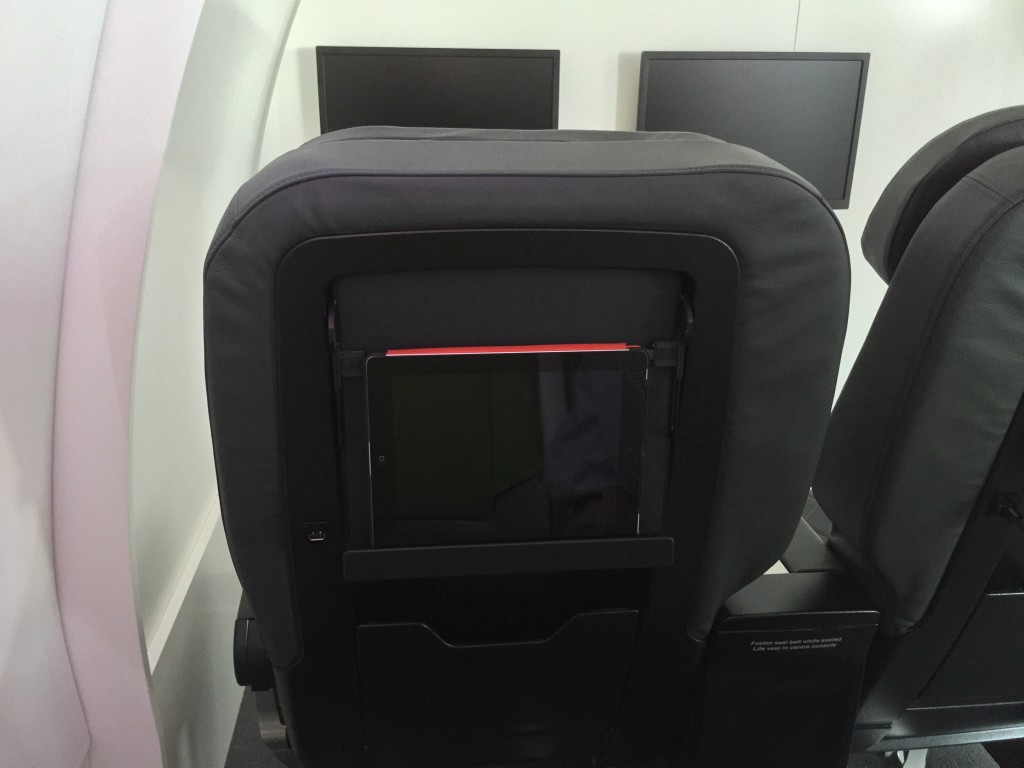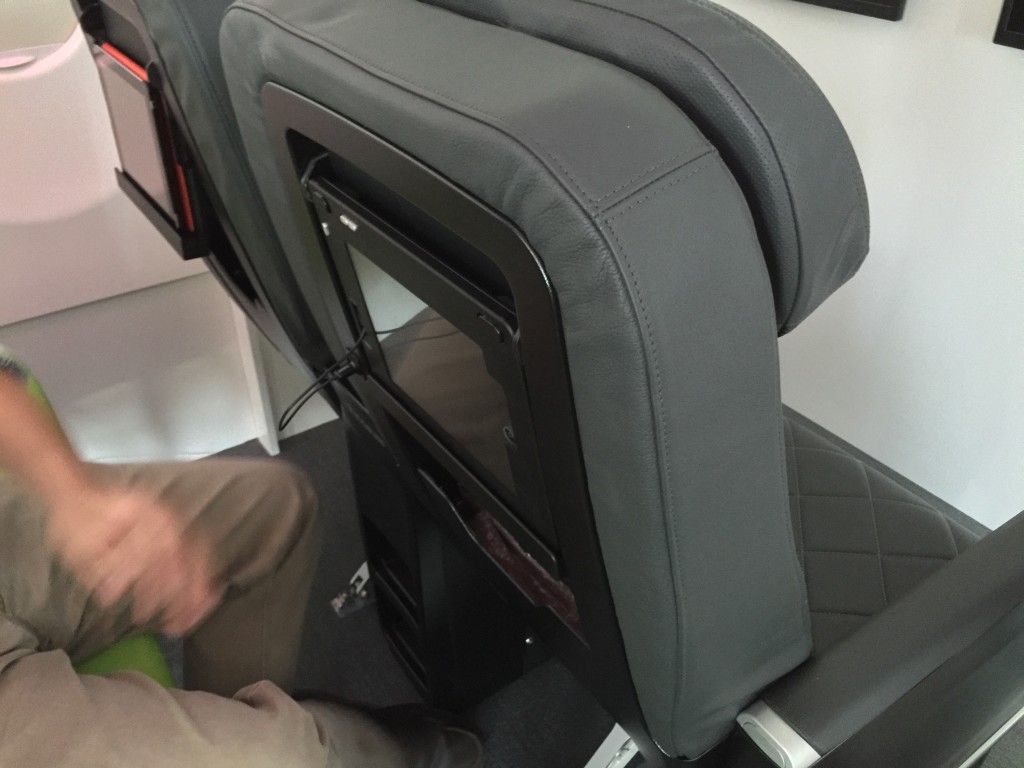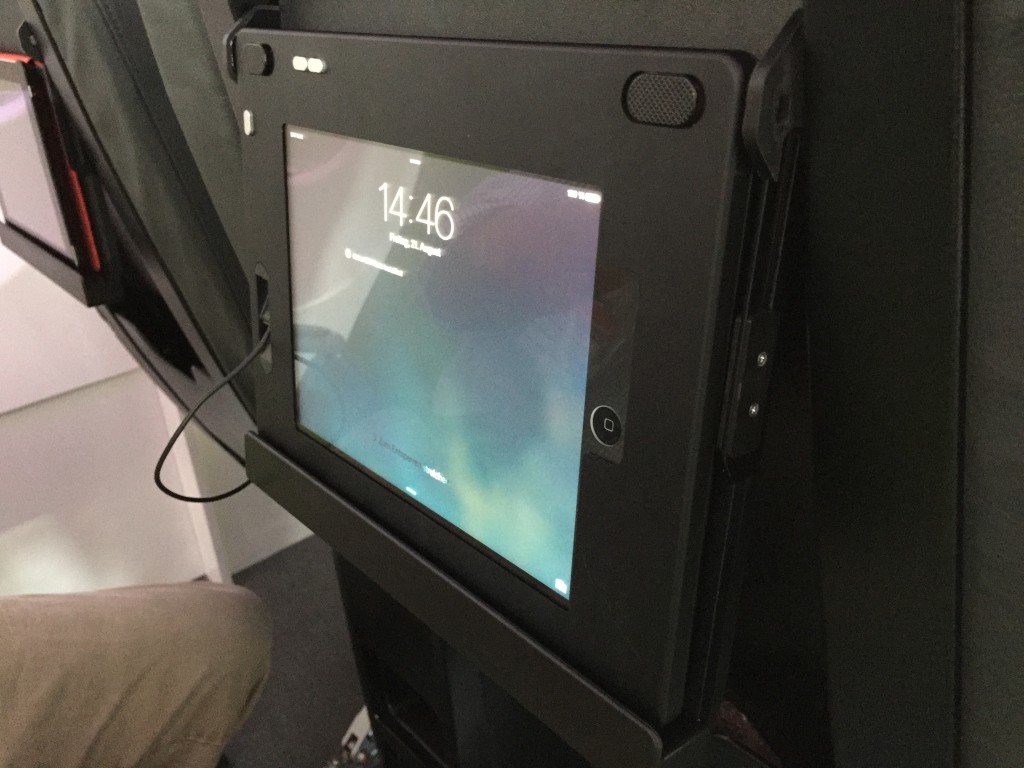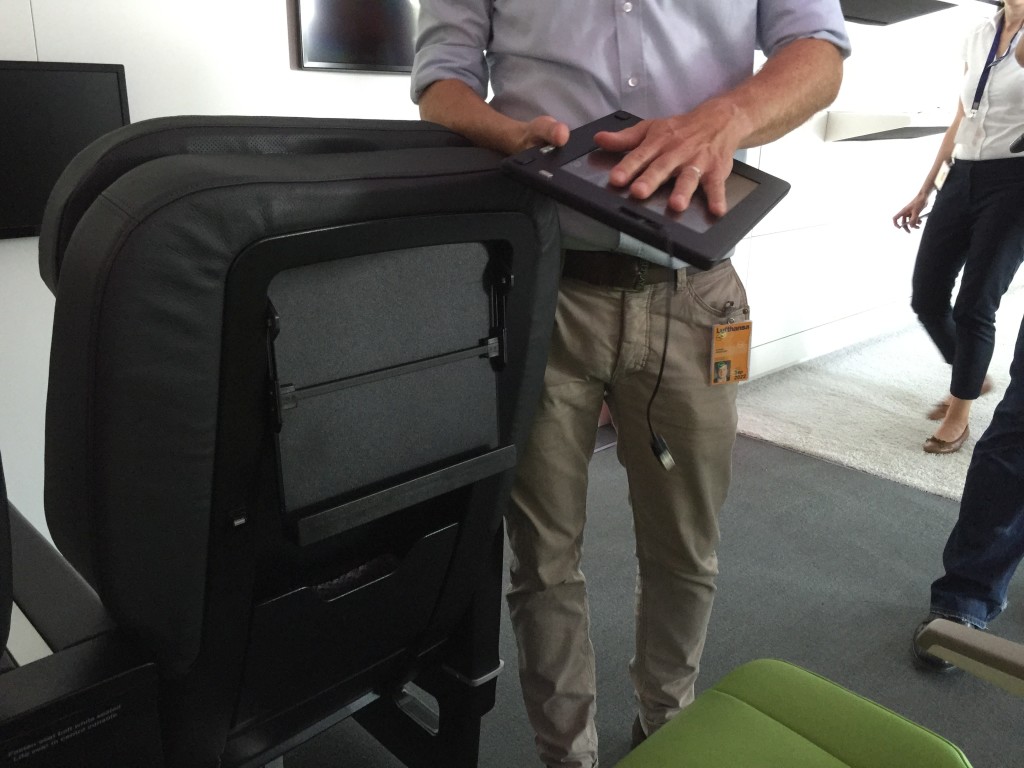Lufthansa Technik is in final certification talks with safety authorities for a semi-embedded iPad inflight entertainment system destined for Qantas, Runway Girl Network has learned.
Inside Lufthansa’s technical subsidiary’s Innovation Centre in Hamburg, RGN went hands-on with the new semi-embedded system attached to the seatback of a pair of Qantas Boeing 717 business class seats — designed by ZIM, the same German seat manufacturer that provides Lufthansa’s premium economy seats. Qantas offers iPads to business class passengers for use with the airline’s wireless streaming entertainment system on these aircraft, while economy passengers must use their own devices.
Once certified and installed, the inflight entertainment product will finally match the interiors announced by Qantas in August 2013 for its high-frequency, low-capacity two-class Boeing 717 QantasLink operation, which principally focuses on the country’s capital Canberra, a small city roughly between Sydney and Melbourne. (A subsidiary QantasLink operation also uses the 717 for flying regional routes in a one-class configuration.)
An interim offering during development has essentially consisted of a standard iPad in an airline case standing on the “utility shelf”, secured by the same tensile strap that is used more snugly for the new system — much like the bulkhead product in the image above.
The principal differences to the interim iPad system are threefold.
First, it can be used in the seatback during taxi, takeoff and landing, which is not possible for a non-delethalised iPad — in other words, one that does not protect the passenger from head injury in the event of the passenger’s head pivoting forwards and (usually due to shattering)
Second, power can be delivered to the iPad, via a thin power connector on the left-hand side of the iPad case, which means that the fairly intense stock and operational requirements for charging devices overnight for a day’s usage are practically eliminated.
Third, the case itself provides significant impact, screen and liquid protection for the device from day to day wear and tear.
Fourth, the glass is less glossy and reflective than the Apple glass, which will be a benefit in the restrictive in-seat use case.
Head impact criterion (HIC) and other qualification testing has been performed, we understand, and LHT expects the system to pass certification testing with the relevant regulators. (Having also experienced the stringent component testing facilities at LHT’s Hamburg headquarters, their confidence would seem justifiable.)
A critical part of the design, manufacture, testing and iteration has been around designing the glass to be both thin enough both to ensure that the capacitive touch-sensitive screen can be operated (including multitouch capability) and to ensure that passengers’ heads are not injured by the device in the event of a head impact. A Lufthansa Technik staffer described the glass — which covers the entire iPad apart from the main home button — as manufactured from “a kind of Gorilla glass”.
To solve the HIC problem, Lufthansa Systems (a separate part of the Lufthansa Group) previously proposed a slide-down plastic screen over Windows and Android tablets, although it would seem that this new solution is more elegant and uses the Apple product favoured by many airlines for familiarity’s (and digital rights management’s) sake.
Yet when RGN first showed photographs of the system on Twitter, the big question asked was how the safety case evolves with the annual revision cycle of the iPad. The iPad demonstrated in Hamburg was the November 2012 iPad 4 model, the second with a Retina display and the first with a Lightning power connector. In the context that the market has not yet defined a typical replacement and upgrade cycle for iPads (a technology just five years old), it’s clear that users continue to get significant utility from devices that are a year or two old. Indeed, iPads like these are still used by many people for light duty, or often passed down to a child or younger sibling — which, given that the Qantas iPads are likely to be used mainly to watch video and listen to music via a wifi connection, is what airlines require.
Watching yet another episode of Modern Family is not the same as playing the latest processor-intensive game. And, lastly, the latest iOS 9 operating system, currently in beta, supports devices as old as the second-generation iPad, which dates to 2011. In short: airlines don’t need to replace their model of iPad with a brand new one every year.
The cost efficiencies of purchasing previous generation or penultimate generation iPads in bulk at a knock-down price is one of the attractions of a semi-embedded system like this for an airline. Essentially, if an airline were today to select a two-year-old 2013 iPad model to use for two years (a low time estimate), Lufthansa Technik would have two years to design, certify and manufacture a slightly modified case for the 2015 iPad model.
In the context of many players in the inflight entertainment and connectivity fields in the arms race for semi-embedded tablet IFE, Lufthansa Technik’s new case is an impressive feat of materials engineering and aviation expertise.
Related links:
- Vistara IFE deal underscores challenges of certifying tablets in seats
- More questions than answers on Embraer tablet integration project
- Lufthansa Systems presents seatback IFE with a twist
- Hybrid IFE models emerge to meet airlines’ varying requirements
- Industry progresses in effort to streamline IFE testing




